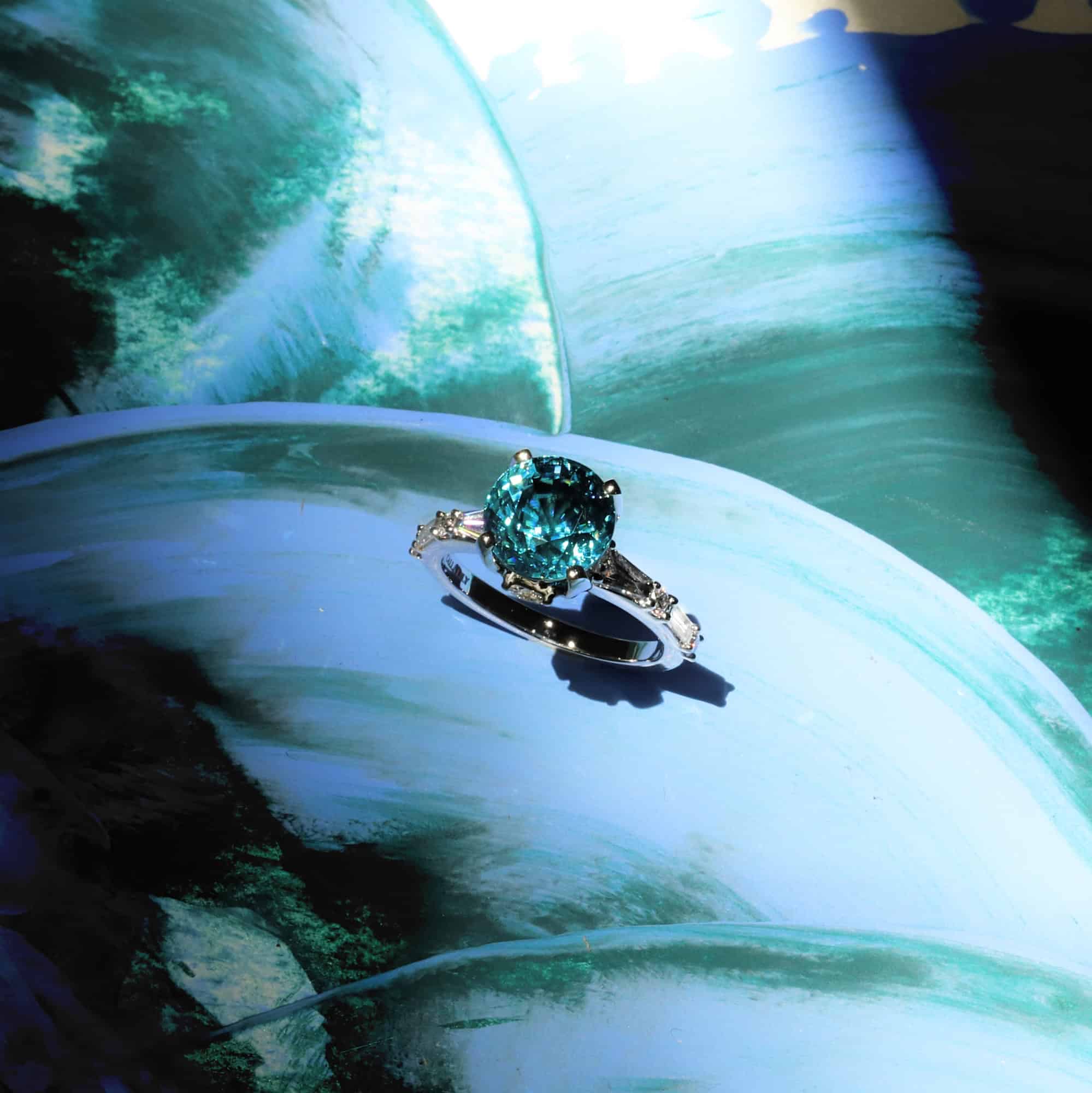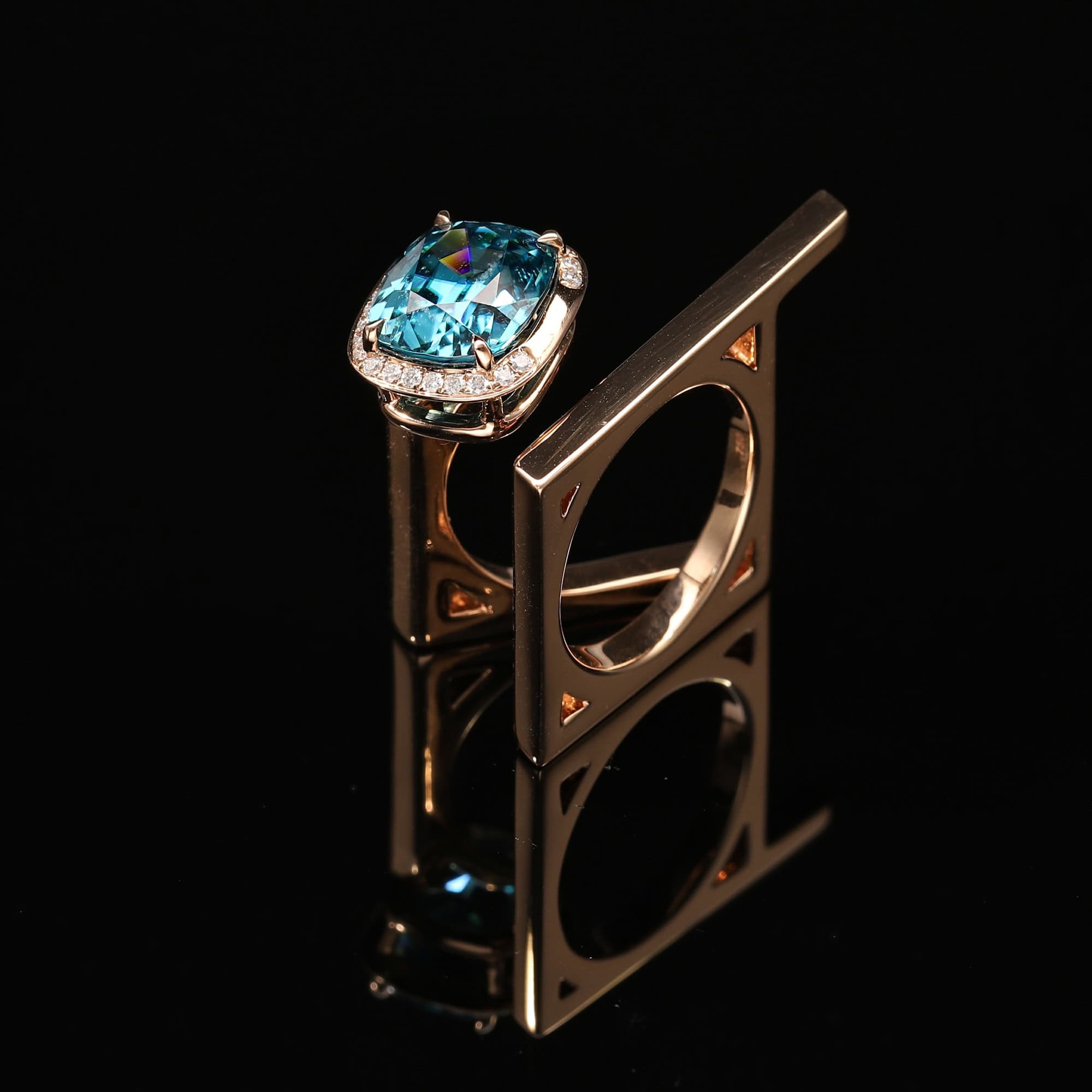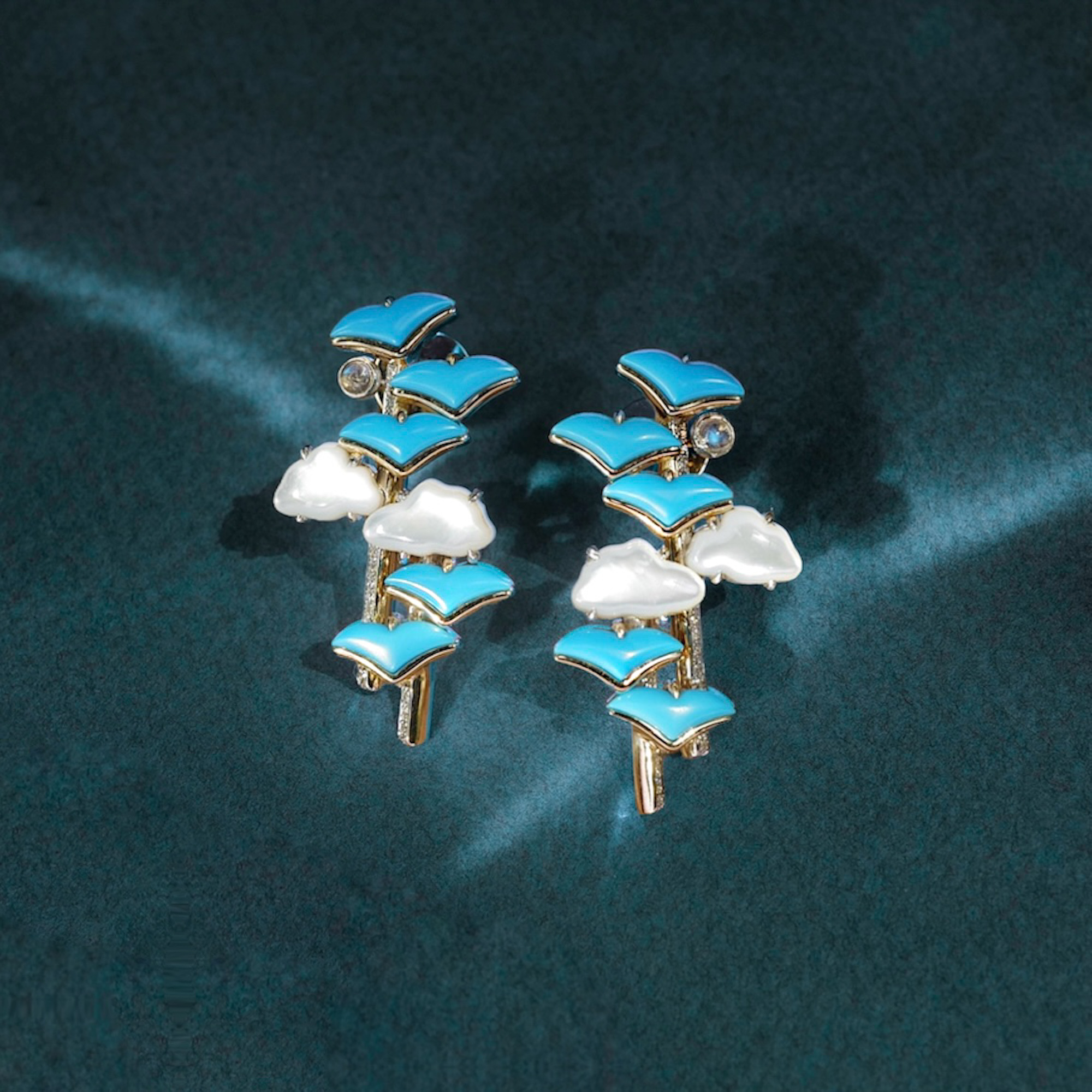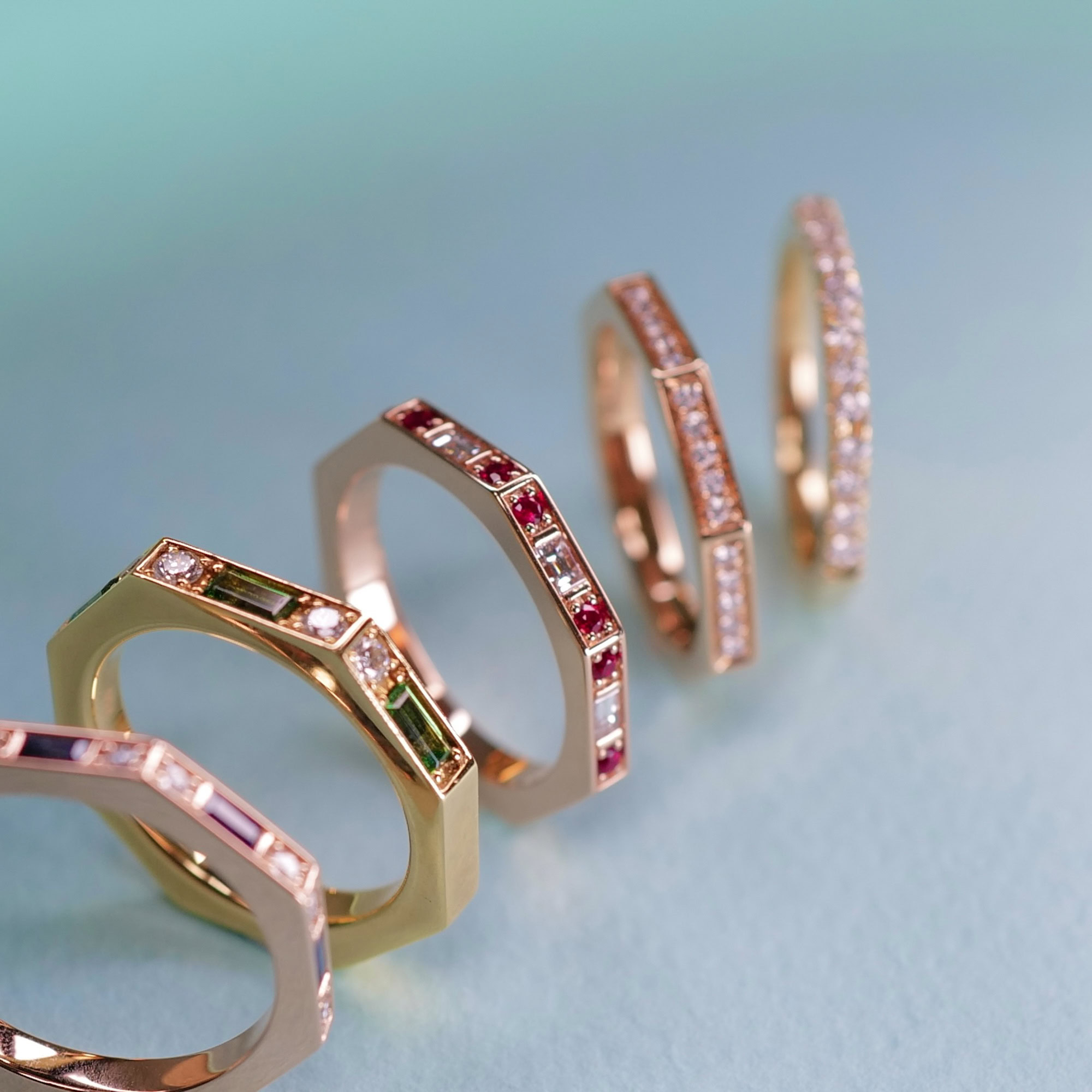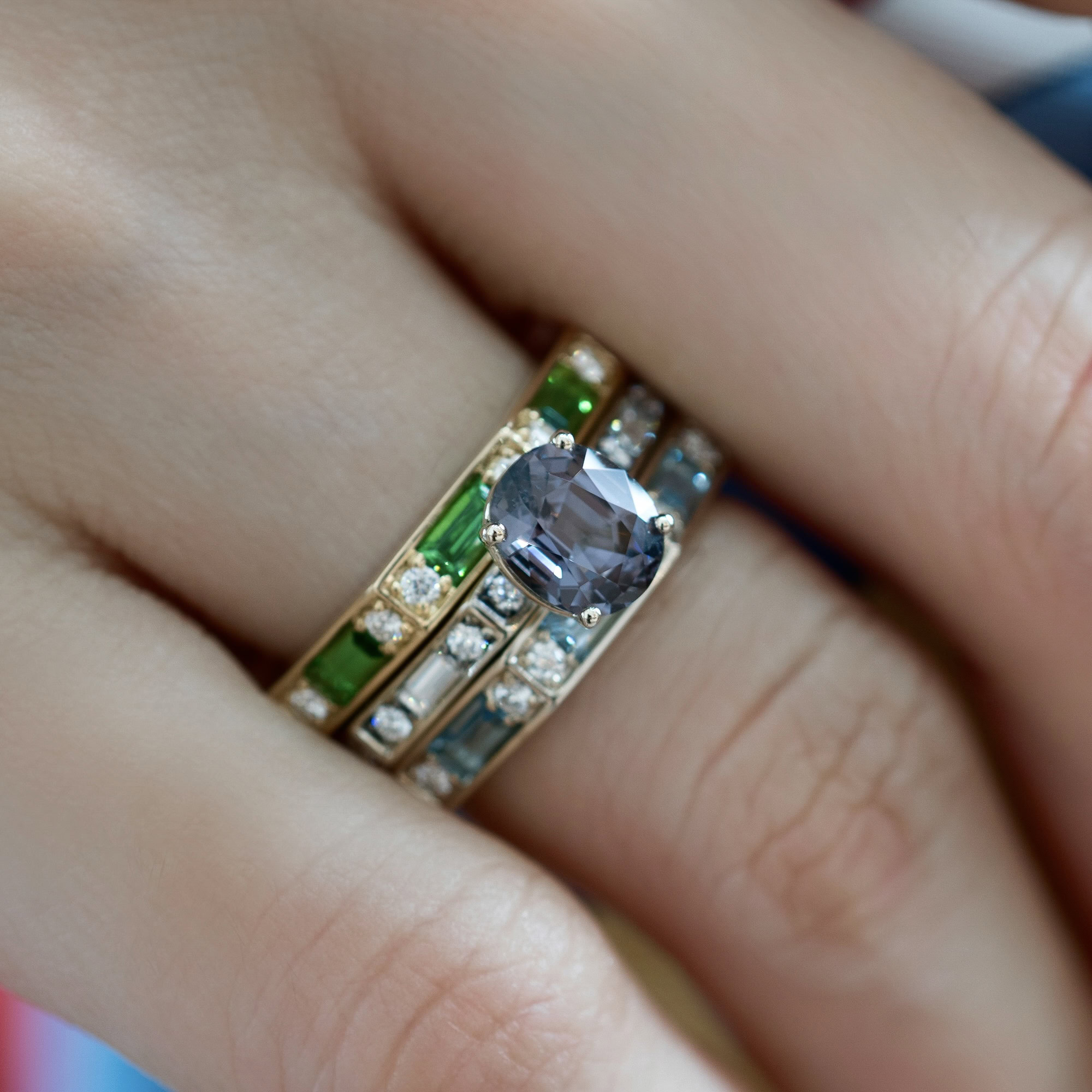Zircon, often overshadowed in contemporary times, are now experiencing a well-deserved resurgence as their true value gains appreciation. The misconception, stemming from their nomenclature, has caused confusion due to the immediate connection with “Cubic Zirconia.”
Zircon vs Cubic Zirconia
To begin with, let us clarify the distinctions between these two gems. Renowned for its role as a diamond simulant, Cubic Zirconia is an engineered stone. In terms of properties, while it does exhibit a few resemblances to zircon, the primary disparity lies in its non-natural origin. Beyond this pivotal dissimilarity, various physical and optical characteristics further set them apart.
Both gems contain oxygen and zirconium in their “chemical formula,” which gemologists employ as a criterion to delineate species, alongside the “crystal system.” Zircon adopts a tetragonal crystal system, while Cubic Zirconia forms within the isometric crystal system. Hence, despite their shared compositional elements, they stand as fundamentally distinct entities.
The difference between a tetragonal and an isometric crystal system lies in their atom arrangement. In the tetragonal system, atoms create a shape with four sides, resembling a stretched cube, while the isometric system forms a perfect cube with all sides equal.

Zircon is an organic matter that may be obtained from sand and sedimentary rocks. It is found most commonly in earthy brown to warmer yellow shades but blue, green and red are also possible. Whilst cubic zirconia on the other hand, is lab-made, being a synthetic mineral. Most often they are colourless but not exclusively. They are notorious for being used as affordable alternatives to imitate diamonds.
In essence, they truly are adept counterparts – a fact that’s perfectly acceptable. However, it’s regrettable that zircon’s reputation has been marred by an unfortunate association, leading to a negative public perception of these remarkable gems. Yet, these gemstones are extraordinary treasures of nature, revered since antiquity.
Unveiling earth’s ancient past: zircon’s timeless tale
The inception of our planet, believed to have occurred around 4.56 billion years ago, was followed closely by the emergence of zircons, boasting an age of 4.4 billion years. Often dubbed “the world’s oldest gemstone,” while not entirely verifiable, this distinction holds high likelihood.
Dating back to antiquity, zircons are amongst the earliest precious crystals. Scientific investigations trace their origins to the landscapes of Southwestern Australia. This prized zirconium silicate mineral, nestled within the Earth’s crust, finds its natural abode within metamorphic rocks and crystallised magma. Through its resilient structure, it has endured the test of time, defying geological forces such as erosion and shifts in pressure. Embedded with the radioactive element uranium, zircons evolve over time, imparting shifts in their bond arrangement and colour. This dynamic evolution offers us captivating insights into our planet’s formative journey.
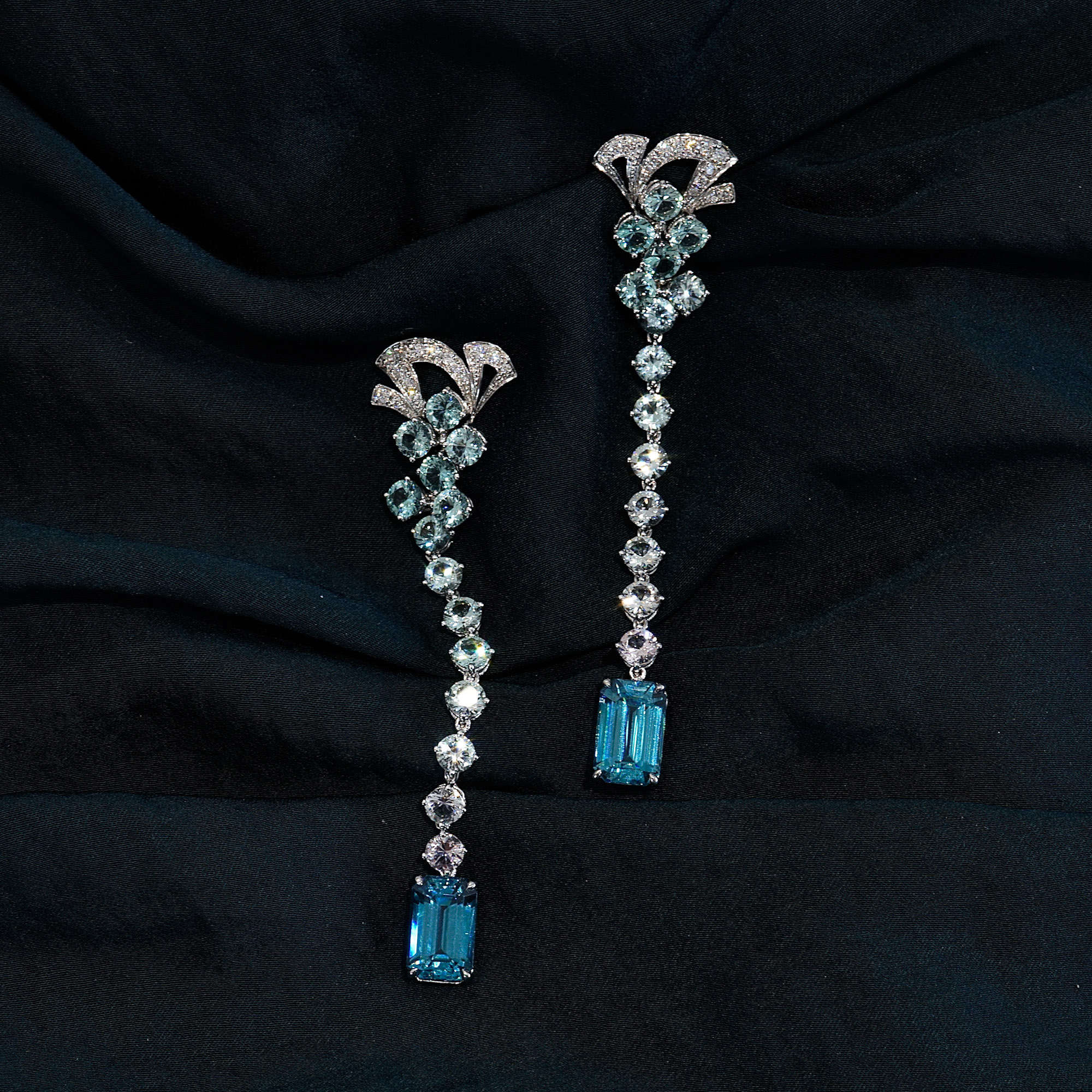
Unveiling the enigmatic zircon: a journey through time
The name “zircon” finds its roots in the Persian term “zargun,” translating to “Coloured Gold.” During the Middle Ages, these gemstones were believed to possess the power to induce deep slumber, repel malevolent forces, and bestow both prosperity and wisdom upon their wearers.
From the 1880s onwards, their presence noticeably graced English estate jewellery, with a special fondness for the blue variations during the Victorian era. An eminent gemologist and prominent figure at Tiffany’s during that era, George Kunz, ardently championed zircons. He even proposed the moniker “starlite” to capture the gem’s scintillating essence. In retrospect, had his suggested name gained traction, it might have averted much future confusion.
Fast-forward to the 1920s, zircons ventured into the realm of decorative arts, becoming a common feature in ceramic creations of the period.
While zircon stands as a cherished gemstone among collectors due to its diverse array of hues, it’s the azure spectrum that captivates consumers the most, often leading to a clouded understanding of this expansive gemstone’s history and possibilities.
How to select and evaluate zircon
Whether you’re searching for a blue zircon to celebrate a December birthday, or simply because you appreciate their amazing qualities and beauty, this is a gem that offers many options.
Starting with what is perhaps the most eminent factor: let’s talk about colour.
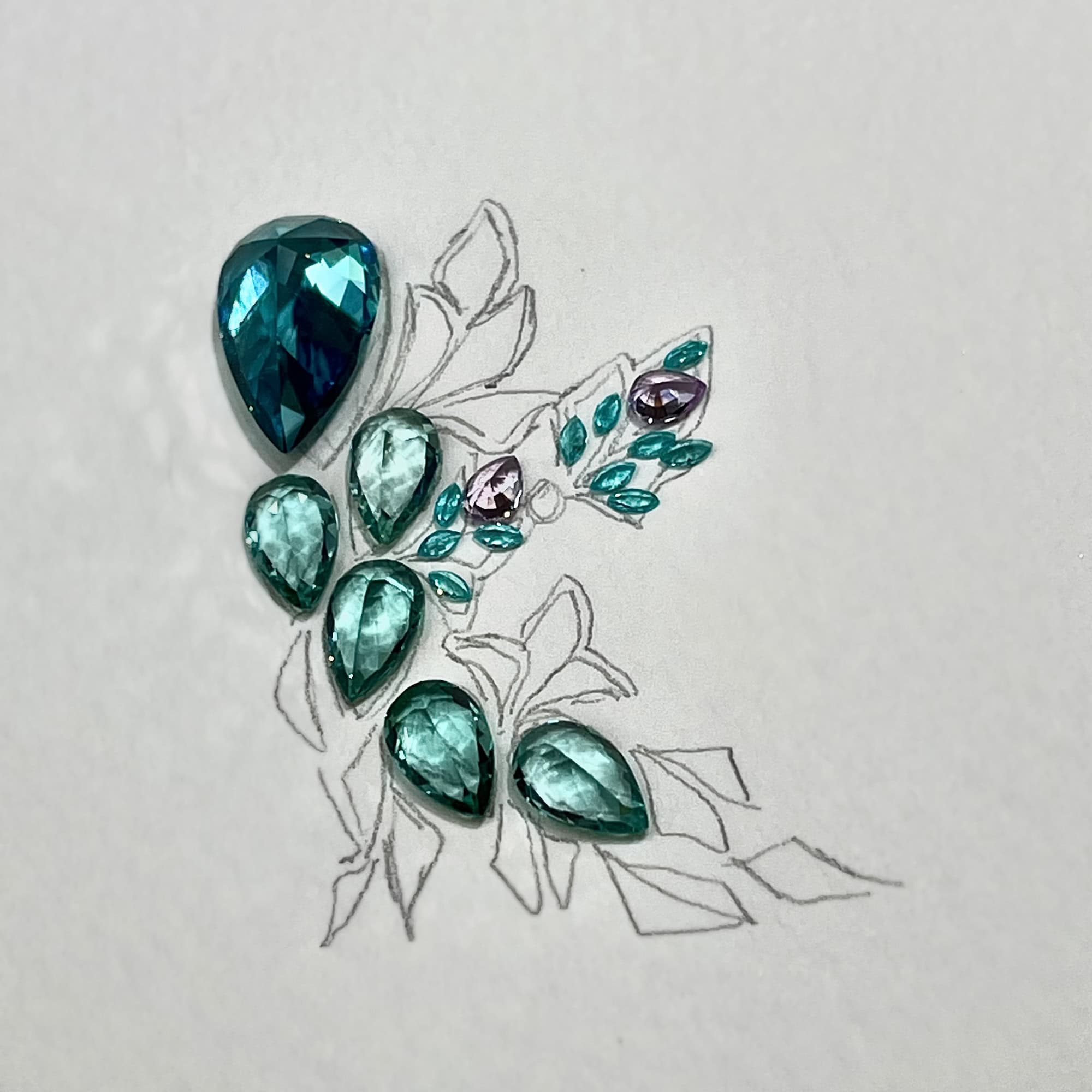
Chromatic alchemy: unveiling zircon’s diverse colours
The enchanting spectrum of zircon’s glorious shades owes its richness to trace elements such as chromium and iron. From warm yellows, earthy browns, and vibrant oranges to the alluring depths of red, the rarest natural incarnation manifests as a captivating green. Yet, it’s the resplendent blue that truly takes the limelight. Its acclaim is unparalleled – sales of this variant alone account for an impressive 80 percent of zircon trade and command premium prices.
Considering size, the dimensions of zircons often align with their hues. Blue and green variations tend to reach sizes of up to 10 carats, while orange and yellow variants may extend up to five carats. Remarkably rare red and purple stones are typically more petite in nature. A curious facet emerges due to their density; despite equal carat weights, zircons’ considerable weightiness might create an illusion of smaller size compared to other gemstones.
A glimmering distinction: zircon’s refractive index and dazzling brilliance
If there’s a single defining feature that sets Zircons apart, it’s undoubtedly their captivating brilliance. Few gemstones radiate with comparable luminosity. This exceptional quality can be attributed in part to their refractive index, a measure of the speed of light’s ratio, gauging the degree of light bending upon entering the stone. This fascinating phenomenon resembles the splintering of light into a spectrum of colours, akin to a kaleidoscope. Subsequently, the gem’s facets play a role in capturing and reflecting this prismatic display, resulting in the mesmerising visual spectacle we behold. Zircon boasts an impressive score on this scale, ranging from 1.92 to 1.95 on the lower end and 1.96 to 2.02 on the higher end, solidifying its position as a radiant gem of remarkable allure.
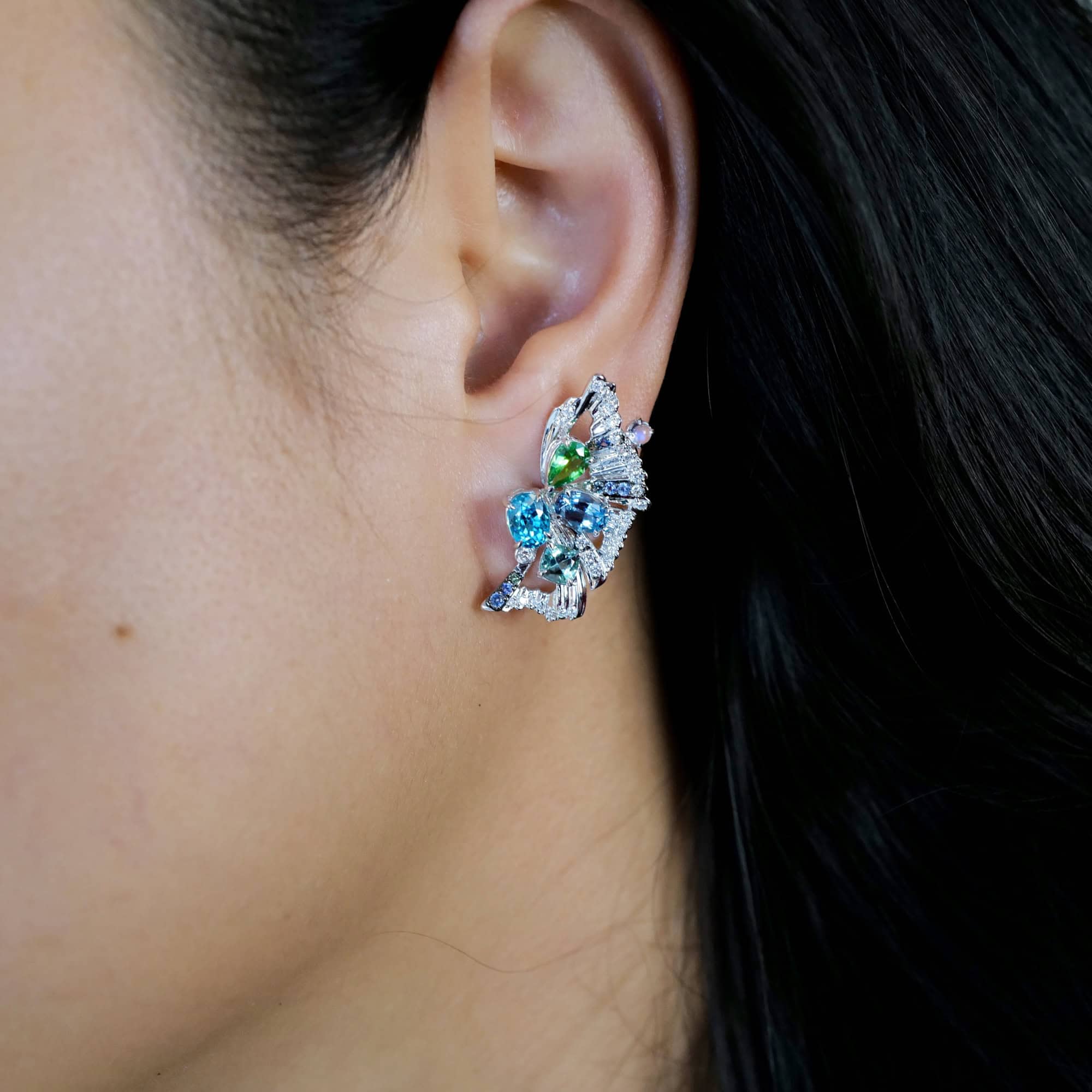
A symphony of radiance: zircon’s lustre, brilliance, and fire
The initial pair of these attributes, lustre and brilliance, draw their essence from the inherent ability to reflect light both from the surface and within the depths of the stone. The majority of zircons exhibit transparency and possess minimal inclusions, permitting light to gracefully traverse them, thus amplifying their luminous allure.
Now, the term “fire” encapsulates a gem’s remarkable aptitude to disperse colourless light into a mesmerising spectrum of hues. As the gem captures a spotlight’s embrace, these hues dance and flicker as the stone moves, a captivating spectacle indeed. This particular phenomenon is a rarity among natural gemstones, but within zircons, it flourishes in an absolutely splendid manner, rivaling even the brilliance of a diamond. The sheer brilliance and fire within zircons are nothing short of breathtaking, an exquisite display of their inherent beauty.
Zircon’s hardness
Akin to garnets and emeralds, zircon’s hardness resides within a comparable spectrum, indicating a fair to good level of resilience. Although it might not rival the durability of a gem like ruby, zircon remains entirely suitable for various jewellery applications, provided it is treated with due care. Ensuring its longevity is as simple as sidestepping rough usage and avoiding forceful impacts. With proper consideration, your zircon piece will endure admirably for years to come.
Unveiling the intricacies of zircon pricing
The pricing of zircon gemstones is an intricate dance that harmonises various factors to determine their monetary worth. Beyond the shimmering surface lies a complex interplay of qualities, origins, and market dynamics that contribute to their valuation.
One of the primary determinants is undoubtedly the gem’s colour. Zircons span a captivating spectrum of hues, from warm yellows to vivid blues, and even rarer shades like green and red. The rarity of the colour significantly influences its price, with the more unusual hues often commanding higher values. Blue zircons, for instance, tend to be the most sought after and thus fetch premium prices due to their widespread popularity.
Another crucial factor lies in the gem’s clarity. Inclusions, or internal imperfections, can impact the overall appearance and brilliance of the stone. Zircons with minimal inclusions are highly coveted and consequently carry a higher price tag. However, certain types of inclusions, like the unique needle-like structures found in some blue zircons, can enhance the stone’s value by creating captivating visual effects.
Carat weight, too, plays a role in determining the gem’s value. Larger zircons are naturally rarer and, therefore, tend to command higher prices per carat. However, it’s important to note that while carat weight is significant, it doesn’t carry the same weight as it might with diamonds due to zircon’s varying density.
Furthermore, the origin of the zircon can influence its price. Gems sourced from specific locations known for producing high-quality zircons may be more valuable due to their superior colour, clarity, and overall desirability.
Ultimately, zircon pricing is a blend of science and art, a delicate balance of its intrinsic qualities and the prevailing market dynamics. As with any precious gemstone, understanding these factors empowers buyers and enthusiasts to appreciate the gem’s value and make informed decisions when acquiring these enchanting treasures.
Elevated to elegance: zircon’s glittering affinity with diamonds
Throughout our journey, the recurrent comparison to diamonds has underscored the undeniable allure of zircons, solidifying their reputation as one of the finest natural alternatives to these coveted gemstones. This inherent likeness to diamonds has ignited a surge in their popularity, creating an enchanting fervour among gem enthusiasts.
Zircons, as an entity, boast a multifaceted splendour, replete with a captivating array of characteristics. Among these, their elevated refractive index and dispersion stand as the hallmarks that have garnered them the illustrious association with diamonds.
Expertly cut, often in the brilliant style, colourless zircons emerge as truly compelling diamond simulants. In fact, they possess the potential to outshine diamonds of lesser quality. It’s intriguing to note that while they have a long-standing history as substitutes, zircons are, in fact, rarer than diamonds. This curious rarity adds to their mystique, positioning them as an exquisite gemstone treasure to be cherished.
In this realm where elegance meets rarity, zircons emerge as not mere substitutes, but unique marvels that captivate with their own brilliance, making them an exceptional choice for those seeking an enchanting gem that stands in a league of its own.
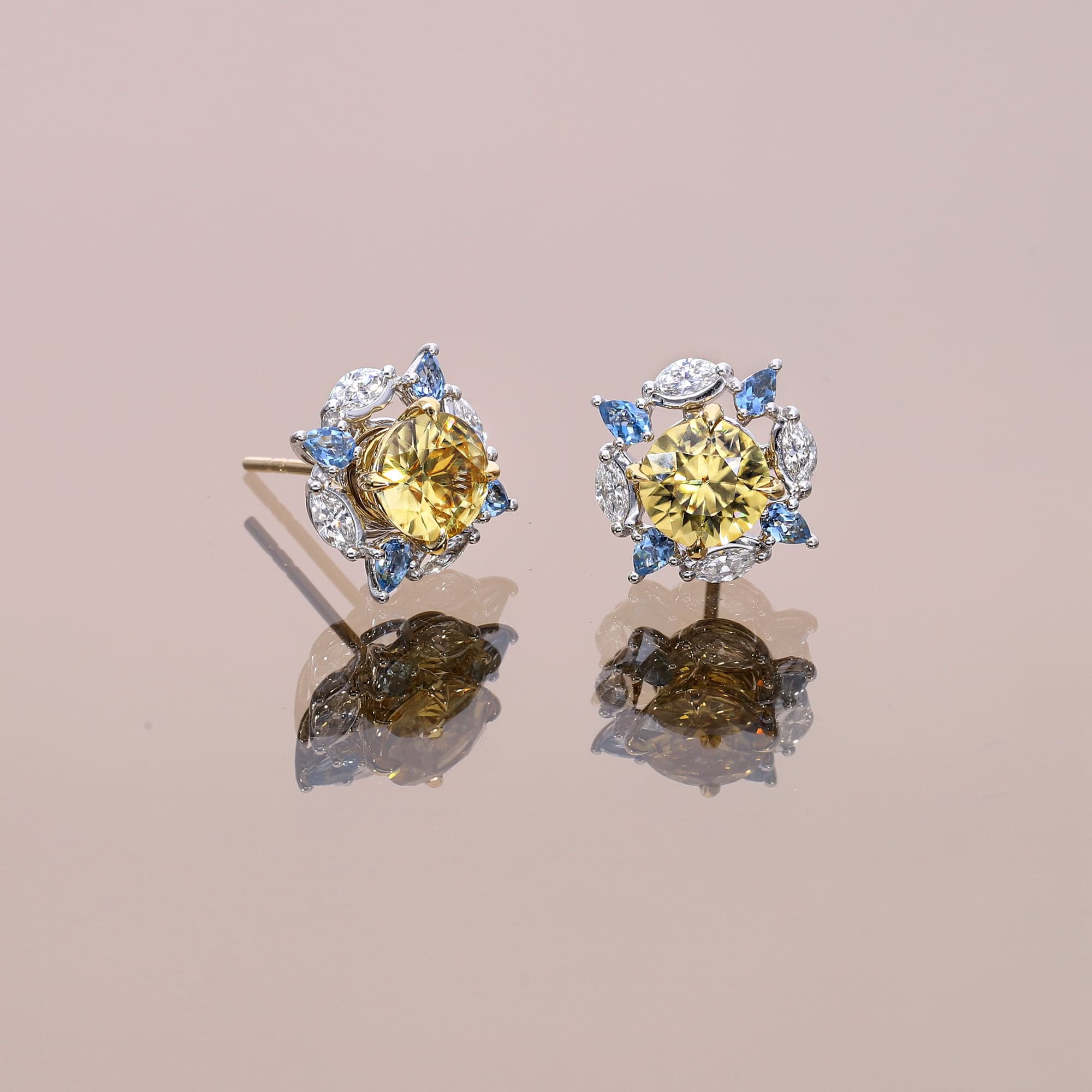
Zircon’s origins
In the realm of modern jewellery, zircons take centre stage in a trio of captivating shades: transparent, blue, and golden-yellow. Frequently fashioned in the brilliant style, these gems are deftly cut to accentuate their mesmerising optical effects and vivid hues. Originating predominantly from Cambodia, they are often retrieved in a brownish hue from the earth. A common transformational journey follows through heat treatment, birthing an array of colours – blue, white, or yellow. This enhancement leverages the innate brilliance of the raw material, amplifying its allure and rendering each stone a visual masterpiece.
Beyond Cambodia, zircons of exquisite quality emerge from diverse corners of the globe. Thailand, Myanmar, Australia, South Africa, and Sri Lanka stand as distinguished sources of these captivating gems. Their origin weaves a tale of geographical diversity, each contributing its unique essence to the kaleidoscope of zircon’s beauty. As these gems traverse the artisan’s hands, they evolve into creations that celebrate not just their intrinsic brilliance, but the skill and vision of those who transform them into wearable masterpieces.
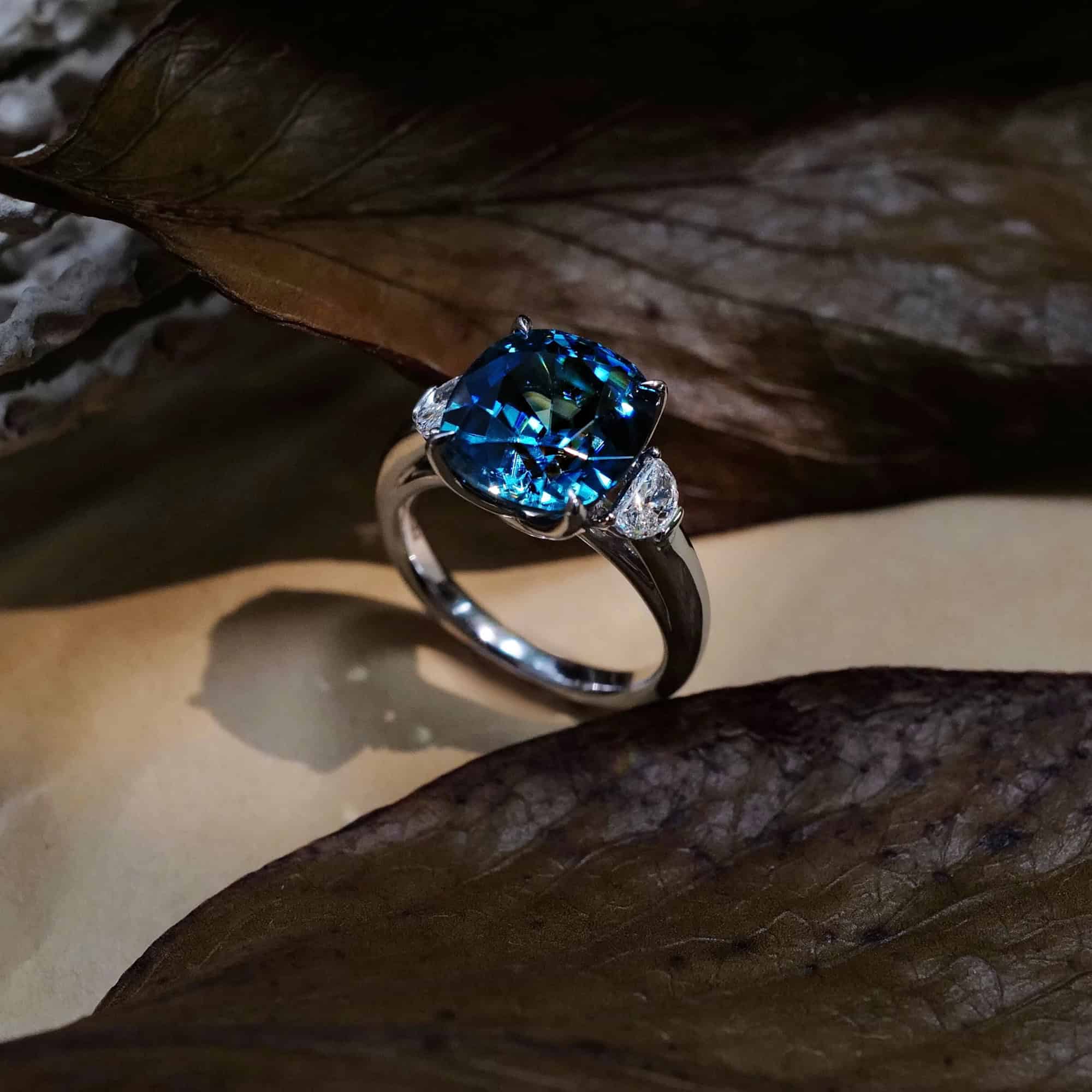
Elevating Bespoke Fine Jewellery: The Irresistible Allure of Zircons
Within the realm of bespoke fine jewellery, zircons emerge as captivating gems that encapsulate the essence of individuality and opulence. The allure that draws us to these exquisite stones is a harmonious blend of characteristics, creating a symphony of fascination that resonates deeply with discerning connoisseurs.
A cornerstone of our affection lies in zircons’ extraordinary versatility. These gems unfurl a breathtaking spectrum of colours, from the serene blues that mirror the expanse of the sky to the warm, golden-yellows reminiscent of sun-kissed moments. This innate ability to encapsulate diverse hues grants bespoke jewellers the opportunity to craft pieces that are as unique as the wearer, embodying personal preferences and stories in tangible elegance.
In the world of customised fine jewellery, the aspiration for brilliance is paramount. Zircons, with their celestial sparkle, emulate the enchanting luminosity of diamonds, elevating each piece to an ethereal realm. This inherent fire captures light like a constellation, weaving an aura of elegance and charm into bespoke creations. By embracing the exceptional radiance of zircons, jewellers have a canvas on which they can express their creativity and expertise, ensuring that each piece is a masterpiece of unparalleled allure.
Delving into zircons’ rich history and symbolism adds an enchanting layer to the bespoke journey. Integrating zircons into custom designs creates a bridge between tradition and modernity, infusing each creation with a sense of narrative and connection that resonates deeply with the wearer.
Zircons stand as living testaments to the harmonious marriage of individuality, elegance, and artistry. Their ability to embody a spectrum of emotions and stories, coupled with their celestial brilliance, allows our bespoke designers to transform these gems into timeless treasures, celebrated for generations to come.
